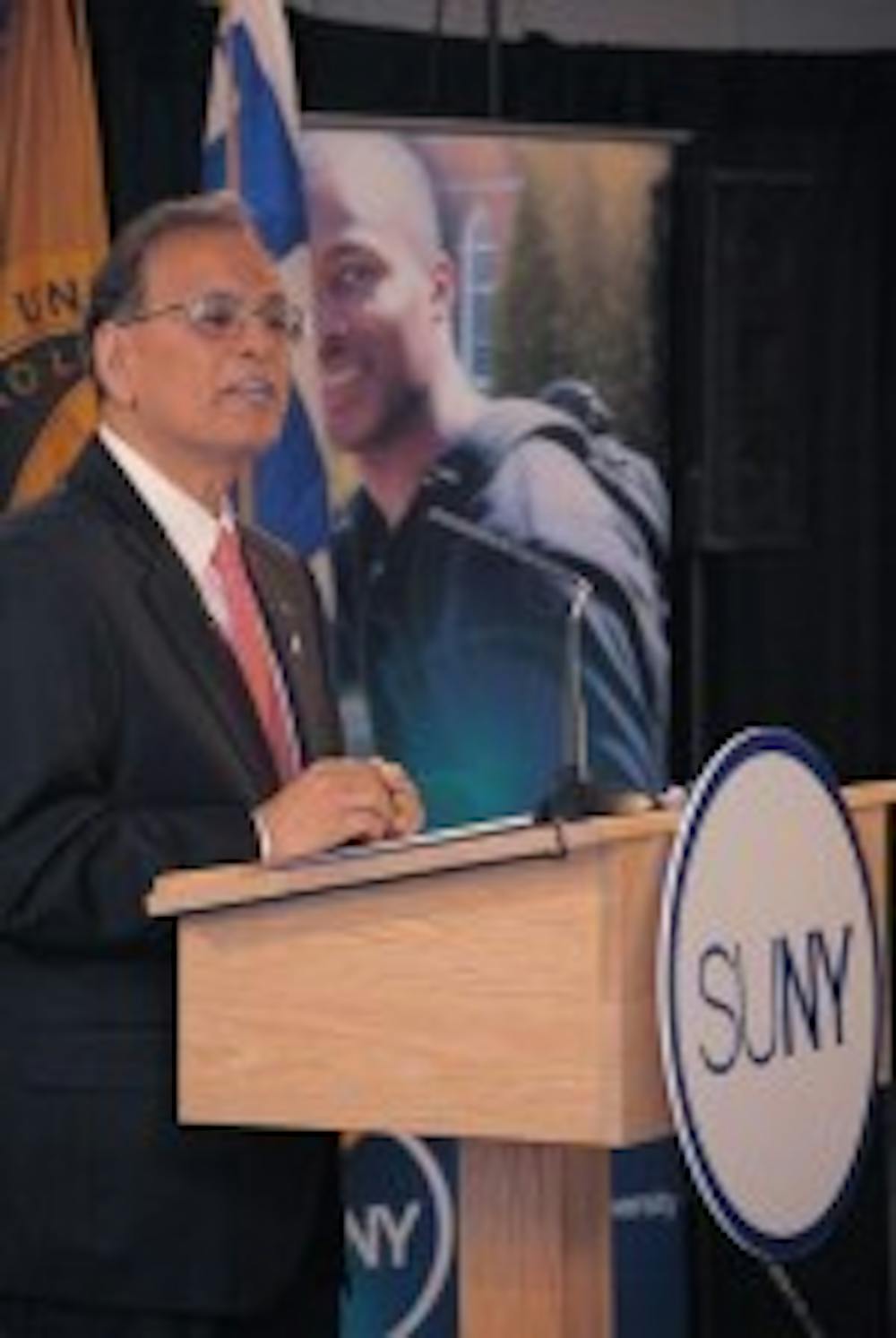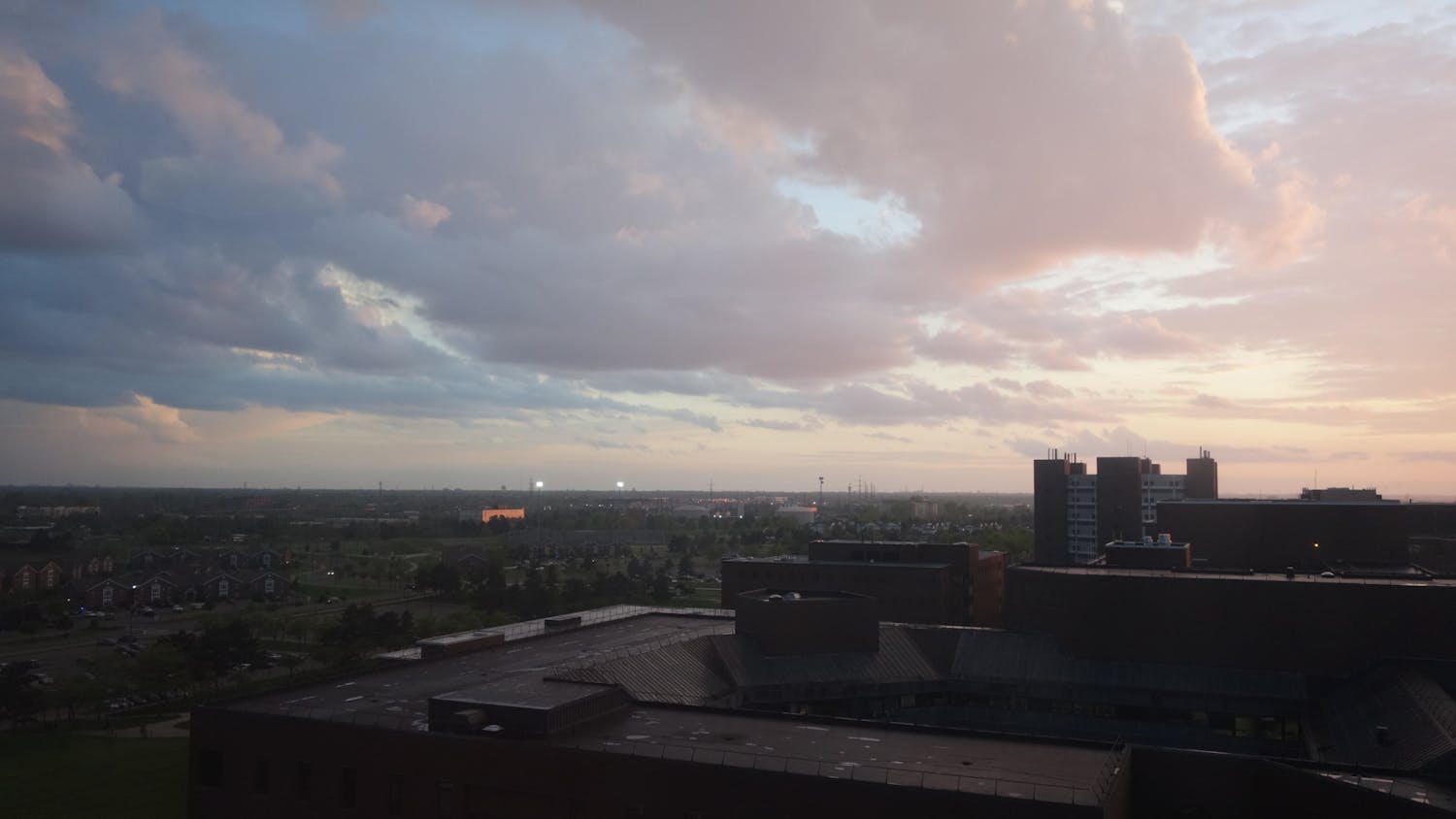With the passage of NYSUNY 2020, the UB 2020 plan for academic excellence – the university's extensive proposal to strengthen education and revitalize the Buffalo-Niagara region – has the monetary and state support needed to move forward.
UB2020, the ambitious UB-only initiative introduced by former university president John B. Simpson, is dedicated to establishing and preserving UB's status as a premier research institution. The UB-only plan for expansion met opposition by state leaders and in May, Governor Andrew M. Cuomo and university leaders proposed the NYSUNY 2020 package as a scaled-down plan for the school with hopes that the inclusion of aid for other SUNY schools would help float it through passage.
On June 24th, the New York State Senate approved the NYSUNY 2020 tuition bill. For UB, the legislation allows progression with UB 2020 plans. The Empire State Development Corporation and the SUNY construction fund will provide $140 million for development projects at each SUNY university center (Albany, Binghamton, Buffalo, and Stony Brook).
The original UB 2020 initiative would have cost $5 billion in construction over two decades; $3 billion in state funding, as well as additional monies from private partnerships, was required.
UB 2020 will now move forward in conjunction with the NYSUNY 2020 plan.
"Educating more citizens of New York State and attracting more students from across the country and around the world will reverse the "brain drain" that has characterized the region in recent years," according to the university's website.
Plans that include the entire university currently focus on the relocation of the UB School of Medicine and Biomedical Sciences (and later the dental medicine, nursing, pharmacy and public health schools) to downtown Buffalo's medical corridor. UB President Satish K. Tripathi said that the objectives of the plan's next phase include "enhanced educational and research excellence, improved health care for Western New York, and creation of an innovation economy that will produce regional job growth."
UB is eligible for $35 million in state seed money from the NYSUNY 2020 bill for the medical school expansion. Development plans have been finalized and construction of a new medical school will be completed by 2016.
Collaborations with leading health care and research institutions such as Kaleida Health will help transform Buffalo into a "hub for ground-breaking medical care, education, and research," according the university's website.
University officials are confident that moving the medical school downtown will help develop Buffalo's emerging biomedical economy with the addition of more than 3,000 new full-time jobs in Western New York and at UB by 2018.
The existing campuses will be enhanced to become more cohesive and pedestrian-friendly with the addition of walkways, new facilities for bicyclists, recovery of green space from current parking lots, removal of unsightly temporary buildings, and the reinforcement of historic quadrangles.
"We will highlight the character of each campus, create more magnetic public spaces, do a better job taking care of the campus "public realm" and revitalize campus landscapes," according to a statement on the university's website. "All of UB's campuses need to be more comfortable, more inviting, and truly more lovable."
More than $500 million in capital projects are currently under construction across North, South and the downtown campuses. The "Heart of the Campus" initiative, part of UB's campus master plan, is based upon the concept that students learn everywhere on campus, not solely in classrooms. New student housing, classrooms, study spaces, computer centers, libraries, and dining services will be designed in continuity with the discovery process.
Through UB 2020, the university will undertake a massive overhaul of the school's academic units; beginning with the five health science schools.
In addition, the bill authorizes all SUNY campuses to raise tuition $300 annually for five years under the "rational tuition plan" included in the bill. Although the tuition will increase from $4,970 annually to $6,470, the state has guaranteed that each campus may keep the additional proceeds. The bill prevents the state from cutting funding to SUNY an amount equal to the proceeds from tuition increases.
As stated in the bill, New York State low-income students who qualify for the maximum aid amount through Tuition Assistance Program (TAP) will not be affected by tuition increases; the university will be required to dedicate a portion of tuition revenues to need-based financial aid.
"The financial-aid program authorized by the bill, and UB's financial-aid plan, will assure that UB education remains accessible to low-income and middle-income students," Tripathi said. "Even with tuition increases, UB will remain one of the most affordable public universities in the U.S."
The economic impact of the SUNY system totals approximately $20 billion statewide and $3.7 billion locally, according to a report by the UB Regional Institute and the Nelson A. Rockefeller Institute of Government at the University at Albany.
Although concern exists that UB will privatize as its works rely upon public-private partnerships for construction and monetary support, university officials stress that UB "is and will remain public, a flagship campus of the State University of New York system. UB remains committed to its mission as a public research university, educating students of all socio-economic levels, and being a vital contributor to the region's economy and quality of life."
Through work with Roswell Park Cancer Institute and Hauptman-Woodward Medical Research Institute, UB is assisting in the development of life-sciences based companies. Additionally, more than 60 companies have been created through technological transfer (research to commercialization) from UB to the private sector.
Email: news@ubspectrum.com





